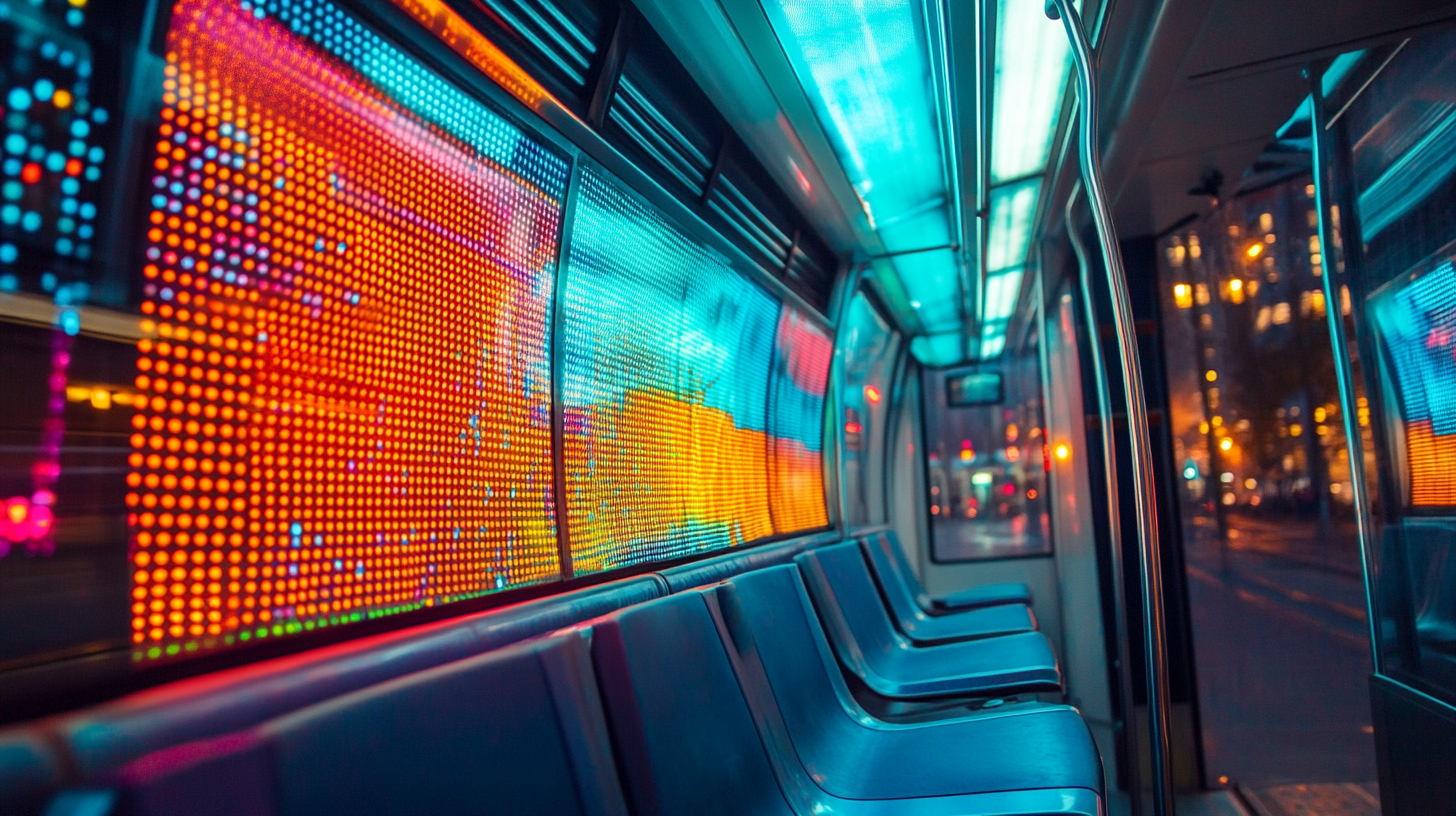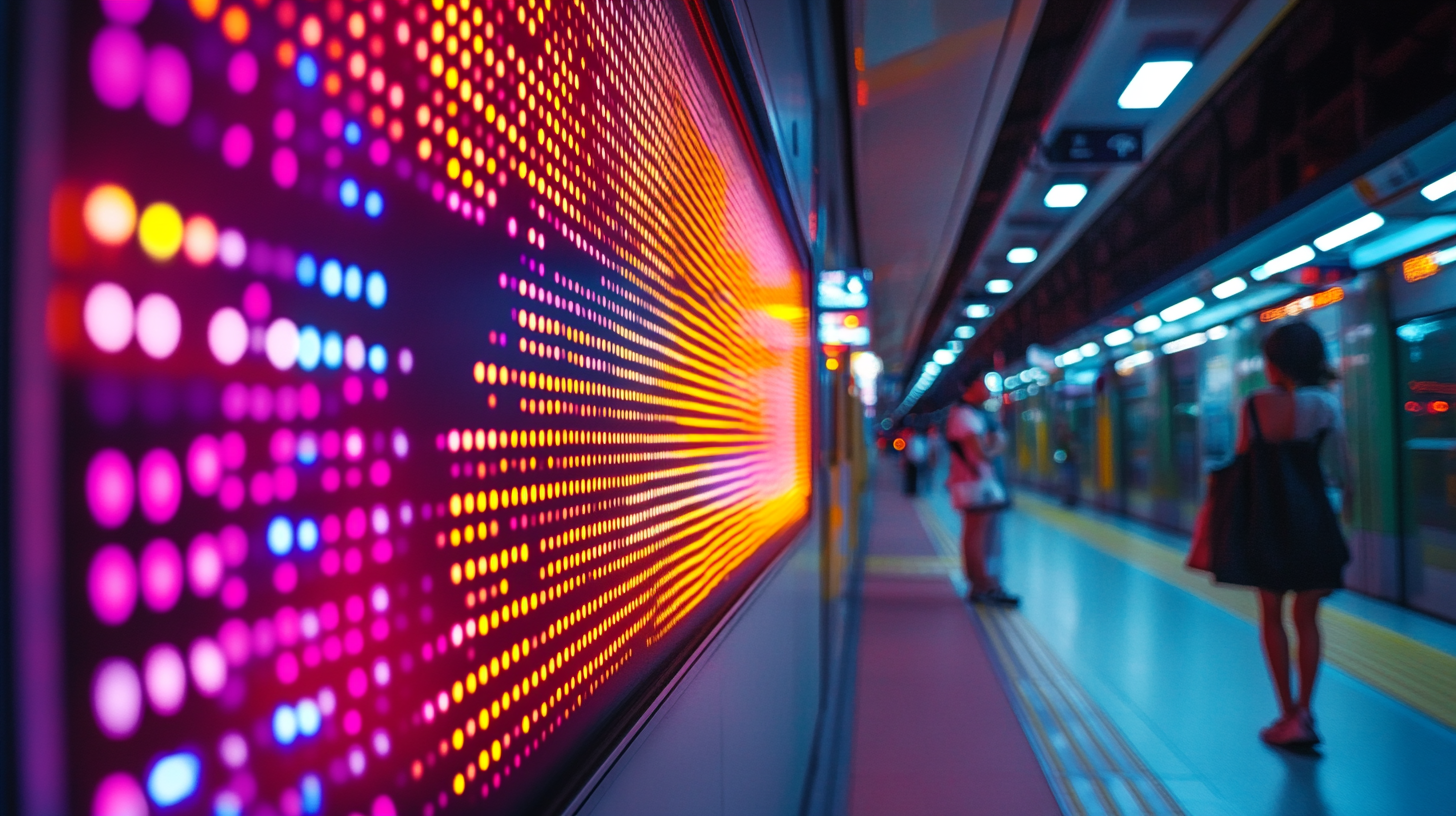1. Clear and Readable Information
One of the most significant benefits of LED dot matrix displays is their ability to present clear, easily readable information. These displays use a matrix of LEDs that light up in patterns to form alphanumeric characters, symbols, and even graphics. This makes it easy for passengers to read and understand vital information at a glance, even from a distance or when the vehicle is moving.
Key Factors for Readability:
- High Brightness: LED technology is known for its ability to produce bright, vivid colors that are easily visible in various lighting conditions. This ensures that the information displayed on transport vehicles is clearly visible both during the day and at night.
- Adjustable Contrast: The brightness and contrast of LED dot matrix displays can be automatically adjusted depending on the environment, making them visible in a variety of external conditions (such as sunlight, rain, or fog).
2. Real-Time Updates and Flexibility
LED dot matrix displays are highly effective in providing real-time updates to passengers. In public transport systems, it’s essential to display current schedules, arrival times, and delays accurately. These displays can be easily updated with new information in real-time, ensuring that passengers always have access to the latest details.
Benefits of Real-Time Updates:
- Dynamic Scheduling: In case of delays or changes to the route, transport authorities can quickly update the display, ensuring that passengers are informed immediately.
- Route Information: Route numbers, directions, and upcoming stops can be easily shown, helping passengers navigate unfamiliar routes with ease.
- Emergency Announcements: LED displays can also be used to show emergency information or safety instructions, ensuring passengers are alerted to important events.
3. Durability and Reliability
Public transport systems often operate in demanding environments, where weather conditions and heavy usage can take a toll on equipment. LED dot matrix displays are designed to be highly durable and reliable, making them ideal for these challenging environments.
Key Durability Features:
- Weather Resistance: LED displays are typically built with IP-rated enclosures that protect them from dust, moisture, and rain, ensuring their longevity and performance in outdoor environments.
- Shock and Vibration Resistance: Transport vehicles experience vibrations and bumps during operation. LED dot matrix displays are rugged and resistant to such impacts, ensuring that they continue to function even in rough conditions.
- Long Lifespan: LEDs are known for their long operational life, often lasting tens of thousands of hours before they need maintenance or replacement, reducing downtime and maintenance costs.
4. Low Power Consumption
Energy efficiency is an important consideration for public transport systems, especially given the number of displays used in a fleet of vehicles. LED dot matrix displays are energy-efficient and consume significantly less power than traditional lighting technologies like fluorescent or incandescent bulbs.
Advantages of Low Power Consumption:
- Cost Savings: Reduced energy consumption leads to lower operational costs for transport agencies, as the power required to run the displays is minimal.
- Environmental Impact: By consuming less energy, LED displays also contribute to lower carbon emissions, helping public transport systems adopt more sustainable practices.
- Longer Battery Life: For vehicles that rely on batteries or have limited power supplies, LED displays help extend the lifespan of these power sources, improving overall vehicle efficiency.
5. Easy Maintenance and Customization
Maintenance and customization are essential features for keeping public transport systems running smoothly. LED dot matrix displays are relatively easy to maintain and can be easily customized to fit the specific needs of each transit system.
Maintenance Benefits:
- Simple Repairs: Individual LEDs in dot matrix displays can be replaced or repaired without having to replace the entire display panel, which reduces downtime and repair costs.
- Remote Management: Many modern LED displays are connected to a central system that allows operators to remotely monitor, control, and update the information displayed across multiple vehicles, reducing the need for on-site maintenance.
Customization Features:
- Content Flexibility: Transit authorities can customize the information shown on LED dot matrix displays to suit the needs of passengers. This includes updating advertisements, route numbers, time tables, or special instructions for specific events or seasons.
- Multilingual Displays: In multicultural cities, these displays can be configured to show information in different languages, ensuring accessibility for a broader range of passengers.
6. Cost-Effective Solution
Compared to other display technologies such as OLED or LCD displays, LED dot matrix displays are a more cost-effective option for public transport systems.
Cost Benefits:
- Lower Initial Investment: The upfront cost of LED dot matrix displays is typically lower than other technologies, which is especially beneficial for public transit agencies operating within budget constraints.
- Lower Maintenance Costs: With their long lifespan and low maintenance needs, these displays reduce the total cost of ownership over time, making them a smart investment for transit authorities.
7. Improved Passenger Experience
The ultimate goal of using LED dot matrix displays in public transport is to enhance the passenger experience. Providing clear, accurate, and timely information helps passengers feel more confident about their journey, improving overall satisfaction.
How It Improves Passenger Experience:
- Clear Arrival Times: Passengers can easily check when the next bus or train is arriving, reducing uncertainty and wait times.
- Route and Stop Information: Travelers unfamiliar with the route can see the next stop or important waypoints along the journey.
- Real-Time Alerts: Notifications of delays, disruptions, or alternate routes keep passengers informed and reduce frustration.
Conclusion
LED dot matrix displays have proven to be a reliable, efficient, and cost-effective solution for public transport systems around the world. Their ability to provide clear, real-time information, coupled with their durability, low power consumption, and ease of maintenance, makes them an invaluable tool for enhancing the passenger experience.